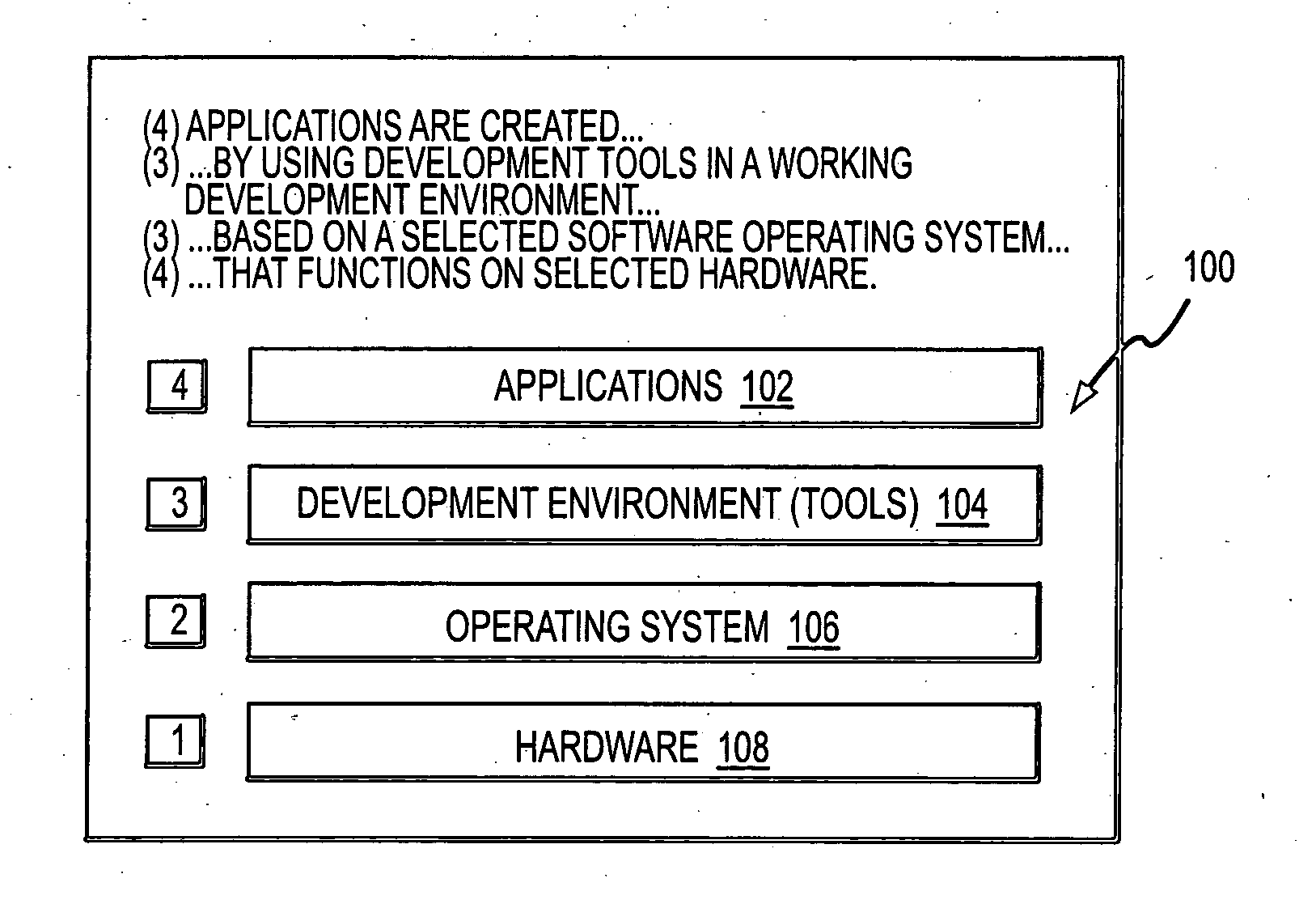[0009] In particular, the present invention is directed to a tool for addressing a number of the above-noted issues relating to software stacks including multiple uncoordinated components. The tool facilitates stack assembly by identifying individual projects, managing dependency relationships and providing an intuitive graphical interface to assist the user. In addition, the tool facilitates installation by addressing machine configuration issues, resolving conflicts and performing at least partially automated testing. The tool also addresses a number of post-installation issues including the generation of appropriate documentation and training tools, as well as by facilitating de-installation of projects as well as modification of replacement projects and software stacks.
[0011] In accordance with another aspect of the present invention, a utility is provided for use in assembling stacks of software projects. That is, the utility is useful in determining the project content of a stack. It will be appreciated the utility may further be useful in identifying and / or resolving conflicts, dependency characteristics and other issues relating to assembling a stack. The utility involves operating a computer based tool to receive input information regarding a stack of interest, determine at least a first characteristic of a first project of the stack, and provide information regarding a second project of the stack. The input information may, for example, identify a function of this stack, identify the first project for inclusion in the stack or otherwise provide initial information for use in assembling the stack.
[0014] According to another aspect of the present invention, a utility is provided for use in assembling stacks by reference to a knowledge base including information regarding a set of supported projects and dependency information. Specifically, the utility involves identifying a set of software projects and determining, for the set of software projects, a set of dependency relationships relating to interoperation of the software projects. A controller includes logic for accessing information reflecting the dependency relationships and relating particular ones of the software projects based on the dependency relationships. In operation, the controller receives a user input indicating an interest in assembling a stack of projects and identifying, at least by type, at least a first project for inclusion in this stack. Based on this user input and the dependency relationships, the controller identifies at least a second project for inclusion in the stack. For example, a user may indicate a particular function to be performed by the stack or a particular project that the user is interested in using. In the case of an identified function, the controller may identify project options associated with the function from which the user can select a desired project. In any case, once a project is identified, the stored dependency relationships can be used to identify prerequisite projects, projects used by the first project and further associated dependencies. It will be appreciated that such dependency relationships may exist between first and second groups of programs. In that case, each group effectively functions as a project and the assembly of the groups defines a stack. In this manner, the user can efficiently assemble a stack where dependency relationships are satisfied across the stack.
[0018] In accordance with a still further aspect of the present invention, a utility is provided for use in installing a stack of uncoordinated projects on a machine or other system designated by a user. An associated installer may be resident on the designated system or interconnected to a system via a LAN or WAN. In addition, the installer may be operatively associated with an assembly utility as described above or may operate independently. The installer utility is operative to receive input information regarding a stack of interest, determine at least a first characteristic of a first project of the stack, and provide information regarding a second project of the stack. The input information may, for example, identify a function of the stack or identify the first project, at least by type. In response to this information, the utility may identify one or more projects having a dependency relationship with the first project or a resource requirement of the first project. Since such information may be used to identify the second project so as to resolve a dependency relationship or avoid a resource conflict. The utility is useful for installing stacks including uncoordinated projects (e.g., open source projects) where at least one of the projects operates at a tools or applications layer of a stack above an operating system level.
[0021] In accordance with a further aspect of the present invention, a utility is provided for enabling substitution of projects within a stack of software projects. The utility involves receiving an input in relation to an installed stack including a plurality of software projects and, in response to the input, substituting for a first one of the projects a substituted project having substantially equivalent functionality. It will be appreciated that this utility is particularly, though not exclusively, useful in connection with open source projects that often have licensing terms that provide significant flexibility in configuring stacks. For example, the utility may be used to substitute a second database project in place of a first database project in a given stack. In this manner, a user can experiment with different projects to build a stack with optional performance for a given endeavor.
 Login to View More
Login to View More  Login to View More
Login to View More 


